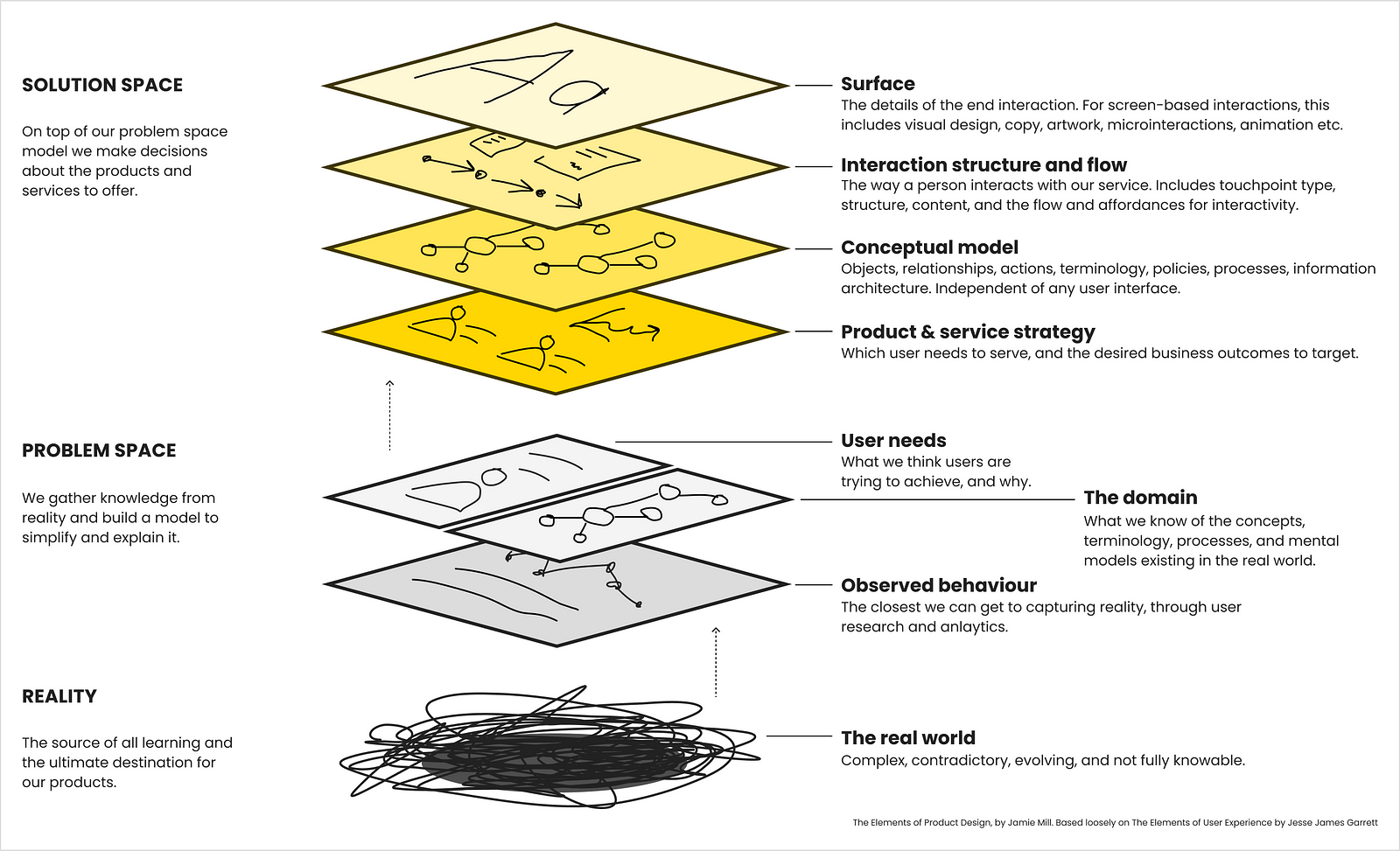🗺 A Mental Model for Product Design
Sep 10, 2021 • 3 min • Product
There's a lot of complexity to unpack in how product design happens. My model for how the design process works has gotten less and less fuzzy over the years, but there's still more clarity to be desired. One helpful thing I came across recently was a blog post going over the elements of product design, which included this visualization:

As a person that loves structured thinking, this really spoke to me. The implications of this might be obvious to you, since the visualization is well done, but I'd still like to walk through the major steps in short. I'll start from the bottom and work up.
The Real World
This is the unfiltered product experience that you and everyone that uses your product go through. We would love to have an all-knowing map of the user experience but that's not an obtainable goal. Experiences are stochastic in nature. Different people interact with your product in diverse, contradictory, and evolving ways. This is the territory that we find ourselves in, and the best we can do is try to build a map.
The Problem Space
Using knowledge from the Real World described above, we can begin to compose a model that simplifies things. Start by observing behavior through qualitative and quantitative measures. These are the two main tools at your disposal: Knowledge of the domain and knowledge of your user's psychology. The more experience and understanding you have in each, the better you can map reality to the problem space.
The Solution Space
Last but not least, the solution space. A common misstep is to jump to this step of the process too quickly. In our case, let's say we have already been diligent about breaking down what we know about reality and using the tools at our disposal to model the problem space. Now it's time for the fun part: Making decisions. Lots of factors feed into these decisions. This varies greatly for different projects, but here's a short list to run through:
- How does this problem relate to broader strategy?
- How should users interact with this experience?
- How does it tie into existing experiences?
- What should it look like?
- How can we make this delightful?
Wrapping up
This post is a short one, but I found it helpful to put this down on paper. Hopefully you found something in here helpful as well. As far as tactical advice goes, the questions above are a good place to start, but I would suggest taking a step back even from that.
When you are working on a new project, ask yourself, "Have we modeled reality and the problem space to the best of our ability?" You will often work with incomplete information. That's the nature of the game. But if taking an hour or two to conceptualize things can help, that's some of the best ROI on your time that you'll get. Give it a try some time.
Thanks for reading! If you enjoyed this post, you can subscribe in the form below to get future ones like it delivered straight to your inbox. If Twitter is more your speed, you can follow me there as well. 🔥